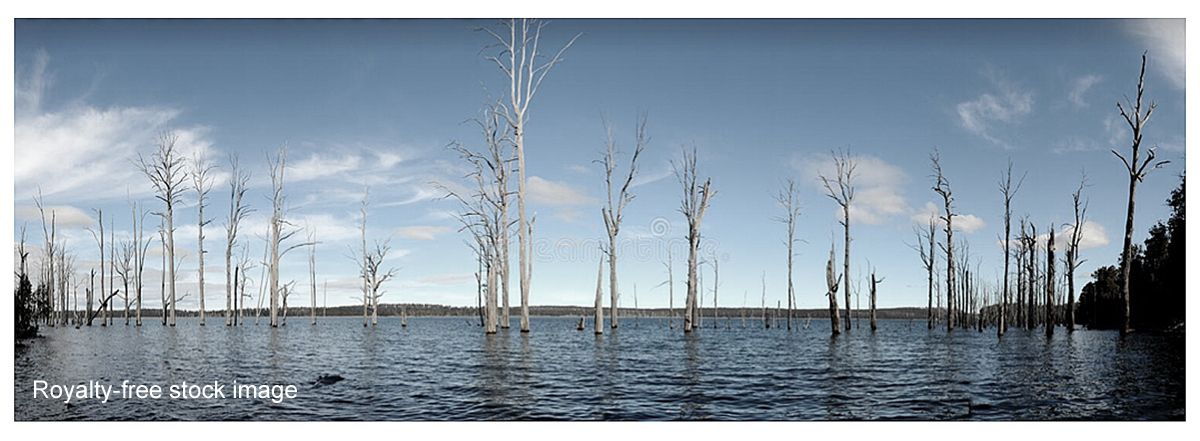Can the Climate Council Deliver? Selectboard and School Board sign petition
Who is the Climate Council and what does this petition mean?

On October 4th the Thetford Selectboard voted to sign, as a Selectboard, a list of nine requests that will be presented to the Vermont Climate Council. On October 12th, the School Board followed suit, giving Nolan Riegler, their represenative to the Town/School Joint Energy Committee, permission to sign on their behalf. About 2800 people around the state have already signed, and more are signing, in support of the requests. The document itself originated from 350 Vermont, an offshoot of 350.org founded by Bill McKibben, who has published articles, authored books, and been hounded by the fossil fuel industry for sounding the alarm about the gravity of anthropogenic (human-generated) climate change.
The list of requests are as follows:
“….we ask you to develop a Climate Action Plan for the People that:
1. Is aligned with the Just Transition Principles developed by the (Climate) Council’s Just Transitions Subcommittee
2. Counts all greenhouse gas emissions accurately to ensure our actions are impactful and proportional to the crisis (including out of state emissions and methane from Hydro Quebec)
3. Establishes a 10-year mass weatherization program for Vermont’s housing stock and prioritizes the needs to low-income and BIPOC (Black, Indigenous and People of Color) communities
4. Develops public transportation systems in urban centers and along major transportation corridors that meet the needs of rural and low-income populations
5. Provides access and resources to farmers who want to practice regenerative agriculture, prioritizing BIPOC farmers first
6. Takes “Renewable” Natural Gas off the table as a potential solution and incentivizes Just Transition renewable energy solutions like net-metering, community solar and solar incentives, heat pumps and geothermal energy prioritizing low-income and BIPOC communities
7. Keeps and puts carbon back in the ground by protecting ecosystems, and preventing Vermont State Lands and the Green Mountain National Forest from large-scale logging
8. Creates a fair and bold funding mechanism for this People’s Climate Action Plan that doesn’t pass on the costs of this transition to future generations
9. Advises the Legislature to pass the following legislative initiatives in 2022
1. Senator Ram’s Environmental Justice bill
2. Appropriate funding for the Climate Action Plan and any bills that support the implementation of a Just Transition Climate Action Plan
3. The VT Renews bills addressing food justice, low-income weatherization and green justice zones, including the Land Access and Opportunity Act (H.273)”
Some residents may be asking at this point “Who is the Climate Council and what does this list mean?”
The Climate Council has local origins, so to speak, in that it was born out of Vermont’s 2020 Global Warming Solutions Act (GWSA) sponsored by Thetford’s Tim Briglin, one of Thetford’s two representatives to the State Legislature. Vermont had previously adopted goals for reducing greenhouse gas emissions, but there was almost no progress toward meeting them. The GWSA converted these goals into mandates and created the Climate Council to develop a Climate Action Plan through which Vermont would satisfy these directives. The GWSA mandates reducing emissions to 26% below 2005 levels by 2025, then to 40% of 1990 levels by 2030 and to 80% below 1990 levels by 2050. The steepness of the reduction is a measure of the seriousness of the crisis that is upon our planet. The deadline for the rules to be completed and adopted by the Climate Council is December 1st of this year.
Transforming the way Vermont obtains its energy—in a way that genuinely cuts back on emissions—is a daunting and convoluted task. It would be hard to name a modern human activity that does not, somewhere along the line, depend on making emissions. The Climate Council strives to approach this problem from various standpoints through five different subcommittees.
The five subcommittees are:
1) Rural Resilience and Adaptation: to focus on the difficulties that will be imposed on rural communities by steep emissions reductions and a transition to non-polluting, sustainable energy sources;
2) Cross-Sector Mitigation: to identify scientifically and technologically feasible strategies that will deliver the biggest bang for the buck in emissions reductions within 5-6 different sectors of energy usage;
3) Just Transitions: to ensure that the strategies benefit all Vermont’s residents equally and fairly;
4) Agriculture and Ecosystems: to increase carbon sequestration in agricultural lands and forests, evaluate the role of wetlands, ecosystems and working lands, and the contribution of current farming and forestry practices;
5) Science and Data: responsible for quality control of available data about climate change, mitigation, adaptation, and resilience.
All the subcommittees are rising to the occasion in the face of an extraordinarily tight deadline. However, none of this enormous effort makes any sense unless it actually results in a real and very sizable reduction in Vermont’s emissions, as specified in the GWSA. And that responsibility rests largely with the Cross-Sector Mitigation subcommittee. They will recommend energy sources that, in their determination, come with the lowest emissions. This will steer Vermont’s investments towards those technologies. Where this rubber hits the road is a tricky interface, populated with diverse interests.
For instance, something called Renewable Natural Gas (RNG) has been turning heads. Note that, at present, the bulk of “our” Renewable Natural Gas is made in Dubuque, Iowa, by a waste treatment plant that captures methane from human sewage. A small amount is generated on a dairy farm in Salisbury, VT. The Iowa gas is pumped into distribution pipes, but, of course, it never gets to Vermont. Instead, the corporate gas supplier Vermont Gas Systems (VGS) purchases the “renewable attributes” of this sewage-derived gas in the form of Renewable Energy Credits (RECs). So the sewage methane in Iowa no longer counts as renewable, even though it is. Instead, VGS attaches those renewable attributes to fracked “natural” gas, a fossil fuel that is definitely non-renewable. VGS even posts an advertisement for this on Facebook, which reads: “Renewable Natural Gas (RNG) made here in Vermont. RNG is created from methane produced from organic materials in landfills, wastewater treatment facilities, and farms! Customers can simply sign up to purchase renewable attributes of RNG for a percentage of their natural gas usage.”
Vermont Gas Systems, along with its sibling utility Green Mountain Power, is 100% owned by Énergir, the largest natural gas distribution company in Québec. In turn, Énergir is approximately 40% owned by Canadian fossil fuel pipeline giant Enbridge and 60% owned by a Québecois pension fund. (Enbridge is in the process of selling its stake in Énergir.)
The most recent available figures on Renewable Natural Gas consumption in Vermont are from 2018. They show only 2,650 Million BTUs of energy from RNG. But a projected model of “emissions reduction pathways” that was provided by Energy Action Network to the Cross-Section Mitigation Committee shows Renewable Natural Gas soaring from those 2,650 Million BTUs in 2018 to a whopping 1,414,038 Million BTUs by 2025 (a 553-fold increase). However, the contract through 2026 between Vermont Gas and the Iowa facility delivers a maximum of 72,000 Million BTUs. Furthermore another enormous jump to 2,839,221 Million BTUs (= a doubling over 2025 levels) is projected by 2030.
Methane is 86 times better than carbon dioxide at trapping heat during its first 20 years in the atmosphere. Therefore, converting it to carbon dioxide by burning it where it is produced to make energy, rather than releasing it, is the lesser of two evils. If, instead, we contrive to burn fracked gas under the guise of renewable, that fracked gas carbon is no longer sequestered underground. Instead, it contributes new carbon emissions to the planet.
It seems likely that Vermont’s dispersed sources of sewage, cow manure, etc., will never generate close to sufficient methane to hit the projection presented by Energy Action Network. That conclusion is borne out in 2016 testimony to the Public Service Board by David Hill, PhD, the Distributed Resources Director and a Policy Fellow for the Vermont Energy Investment Corporation. Dr. Hill referred to a 2011 American Gas Foundation Study that estimated Vermont’s potential to generate RNG from anaerobic digestion, under an “aggressive scenario,” at 28% of VGS sales. Dr. Hill noted that if any of the RNG projects actually produced enough methane to be commercially viable, they would require new pipeline extensions.
Another disingenuous practice is the counting of electricity from Hydro Quebec as being free of greenhouse gas emissions. Hydro Quebec, when fully built in 2022, will have flooded 6 million acres of forests that emit methane as they decay. (For scale, VT is 6.1 million acres in area.) In spite of a Vermont law pre-dating the GWSA, 10 V.S.A. § 578, that requires reduction of both in-state emissions and “those emissions outside the boundaries of the State that are caused by the use of energy in Vermont,” Hydro Quebec emissions are being ignored. Vermont and other states are beginning the transition to electric vehicles and heating with electric heat pumps. If emissions are not counted honestly, there will be little to stop construction of more dams that flood huge tracts of forest, releasing more sequestered carbon and displacing Indigenous communities.
As a reference point, none of the other new England States count Hydro Quebec electricity as renewable.

It’s perhaps worth noting at this point the slippery slope between development of the Climate Action Plan and corporate interests. Liz Miller, Vice President and Chief Legal Officer at Green Mountain Power, has a seat on the Climate Council. While Vermont Gas Systems doesn’t have a direct position as such, its President and CEO, Neale Lunderville, is on the Board of Directors of Energy Action Network (EAN), the nonprofit that generated the model for emissions reductions mentioned above. EAN used assumptions and data provided by VGS for the RNG component of the model. The executive director of EAN was appointed to the Climate Council as the energy and data analysis representative, and he sits on the steering committee.
The goal of the GWSA is to make a transition to energy sources that cut our emissions drastically. That’s why request #2 in the petition to the Climate Council reads “Count all greenhouse gas emissions accurately to ensure our actions are impactful and proportional to the crisis (including out of state emissions and methane from Hydro Quebec). Re-naming fossil fracked gas as “renewable” and classifying electricity from a methane-emitting hydro facility as “emissions free” does not deliver a real-world reduction in emissions. It smacks of business as usual.
It is critical that the State interprets the GWSA using correct and unbiased information if we're to be part of the solution rather than the problem. The state needs to live up to the real meaning of our Global Warming Solutions Act.
Title photo credit: Li Shen
